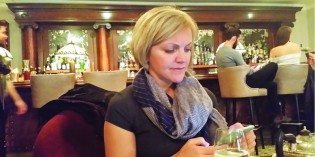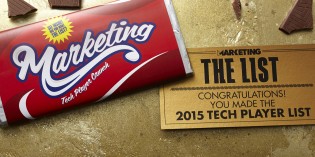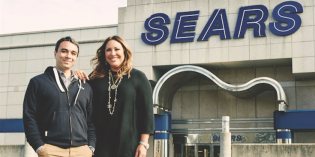Walking into the offices of Canada’s Olympic Broadcast Media Consortium nine months after the Olympic flame was extinguished on that unforgettable February night in Vancouver feels strangely underwhelming.
With its row upon row of empty cubicles, the space at CTV’s Scarborough, Ont., broadcast centre seems nothing like the nerve centre of an historic multimedia behemoth spanning conventional, specialty and multicultural TV, online, radio and a national daily newspaper. For now the Consortium is operating with a skeleton staff of less than 30 people in the relatively brief lull between the Vancouver and London Games. Even so, today’s tranquility is somewhat misleading. The Consortium’s production team is in Montreal, briefi ng their French counterparts on the plan for London 2012, while the sales team is out making agency presentations.
“People sometimes comment that ‘2012 is 18 to 19 months away, what could you possibly be doing?’ But the Olympics are such a massive project that you always have to be out ahead of it,” says Adam Ashton, the amiable 38-year-old who succeeded Keith Pelley as Consortium president in August. “We’re very cognizant that it’s around the corner.” On one wall of Ashton’s corner offi ce, a whiteboard serves as a constant reminder of the looming Summer Games. Each morning, his assistant Danielle writes in red marker the number of days remaining until the Opening Ceremonies. On this unseasonably warm afternoon in late November, the number reads 612.
Along another wall are a series of mementos from the Vancouver Games. The most gripping is a large framed photo from The Globe and Mail taken a second after Sidney Crosby fi red a Jarome Iginla feed past U.S. goaltender Ryan Miller at 7:40 of overtime to produce, according to the historic call of Canadian play-by-play announcer Chris Cuthbert, Canada’s “golden goal.” Looking at the picture, Ashton, who was VP of marketing before his promotion to president, begins pointing out little details: the people in the stands wearing the Consortium’s “Believe” merchandise (still available at the CTV Olympics online store); the joy of the Canadian fans, the anguish of the U.S. supporters who dot the stands; the group of blue-clad Olympic volunteers cheering behind the U.S. net.
Recalling the goal—“[U.S. defenceman Brian] Rafalski lost Crosby”—Ashton morphs from an executive charged with overseeing a media colossus that will soon grow to 1,300 people, into merely an enthusiastic fan—another person helplessly caught up in what he had earlier described as the “magic engagement factor” of the Games. It was with those fans in mind that the Consortium, an improbable melding of two fi erce media rivals in CTV and Rogers Media, developed an unprecedented content-delivery platform for the 2010 Vancouver Olympics.
The result was a 17-day event that reached virtually every Canadian, produced the top-fi ve most-watched programs in Canadian TV history
(led by 16.7 million for the Canada – U.S. men’s hockey final), and ushered in an era of “three-screen” viewing—TV, internet and mobile—that established a new benchmark for how major sporting events will be delivered from now on.
This Herculean endeavour (Ashton has taken to calling it Media 2.0) earned the Consortium seven Gemini Awards, a gold in the “Best Olympic Sports Production” category at the International Olympic Committee’s Olympic Golden Rings competition, and countless plaudits from the broadcast and advertising industries. Now, it can add Marketing’s 2010 “Media Player of the Year” to the list. According to Ashton, the Consortium adopted a mantra early in the lead-up to the Vancouver Games that would set the tone for everything that followed: “Like never before.” It was an objective achieved through unprecedented technological acumen, a melding of disparate corporate cultures for the common good and, perhaps most importantly, a consumer-centric approach to delivering Games content.
“The Games was all about choice for us,” says Ashton. “We wanted to make sure that however consumers were going to interact with the Games, they were doing so on their terms. It was watching what they wanted, when they wanted, and how they wanted.” The results of the strategy are astounding. It’s estimated that 99% of Canadians watched at least some Olympic coverage through multiple media that included standard broadcast outlets (CTV), specialty TV (TSN, RDS, Sportsnet, OLN) and multicultural TV (Omni, APTN), online via the two main Olympic sites (CTVOlympics.ca and RDSolympiques.ca), and via mobile devices. That’s not to mention people receiving Olympic updates via radio (Fan 590, 680 News) and a national daily (The Globe and Mail).
Canadians consumed a staggering 1.5 billion hours of Olympic coverage in total, with the average person watching 38 hours. The immense popularity of the Games was underscored by the fact that TV viewing during this time increased by about 22% versus the previous five weeks. But it was online where the Consortium really broke with the past. An estimated 12.3 million unique visitors logged on to at least one of the two Olympic sites, which gathered a total of 215 million page views. Viewers consumed an estimated 7.2 million hours of online video (including 259,079 videos viewed on mobile devices).
“What was very gratifying was to take two big companies who were ferocious competitors throughout the year and during those 17 days they all came together and everyone was singing from the same song sheet,” says Pelley, who left the Consortium in August to succeed Tony Viner as president of Rogers Media. “You’re bringing together people who compete in their everyday lives and now they have to bring their skill set to the table for the common good.” Advertisers, meanwhile, overcame some initial apprehension from a combination of sticker shock (media buyers expressed surprise at rates when the Consortium first began the sales process early in 2009) and a crippling recession to embrace the Games like never before.
According to Ashton, the market began to change when the Olympic Torch relay got underway in October 2009. “People really evaluated their business and said ‘How can I afford not to be part of these Games?’” he says. But before a single billboard, 30-second spot or integration package was sold, the Consortium went to prospective clients to gather insights into their business objectives and came back with a set of targeted marketing approaches.
It was a strategy that yielded a range of in-depth features like the Gemini Award-winning “GE Superbodies” segment, which used 3D technology to show the makeup of athletes’ bodies and what happens to their various muscles and joints during Olympic competition.
Other segments included the pre-Games “Get to Know Your Canadian Athletes” segment, which gave Canadians an in-depth look at 25 English and French Olympians around five key areas: “my sport,” “my style,” “my music,” “my fashion,” and “my hobbies.” Elsewhere, the McDonald’s Canada-sponsored “Difference Makers” segment took the shape of a series of vignettes dedicated to the people who contributed to Olympic athletes’ careers.
Not surprisingly, advertisers are overwhelmingly positive in their assessment of the Consortium. “It was a very favourable experience,” says Hope Bagozzi, director of national marketing for McDonald’s Restaurants of Canada. “A very talented group of individuals came together and really understood the medium, the event and what their partners and sponsors were looking for. It was a partnership that was well founded right from the initial stages, when we worked together to craft the packages.” Bagozzi says the Consortium continued to be pro-active even after the Games had begun, constantly seeking out new opportunities for clients. “They were very flexible and continued to enhance our partnership,” says Bagozzi, noting that a late addition was McDonald’s sponsorship of the medal count. Loring Phinney, vice-president of corporate and Olympic marketing for Bell, says the Consortium provided the perfect platform for Bell to promote its mobile network and its devices.
“The Consortium was a great partner going into the Games—not just because they had an inventory of things that many people would love to have, but because they took a true three-screen strategy to the way they approached the games,” he says. “For Bell, as a telecommunications provider trying to create a better experience for its customers, we felt they were in lockstep with us throughout the process to ensure that all of our customers, on any range of screens, could experience a better Olympics.”
After merely dabbling with mobile content for the Torino and Beijing Games, Bell made a wholesale investment in Vancouver, offering an unprecedented 2,400 hours of live streaming content across a variety of channels. Phinney refers to the Games as the “coming out” for mobile video. “Yes, it cost a lot; yes it was complicated,” says Phinney. “But [the Consortium] were a great group of people to work with and in the end they helped bring our products to life—and that’s hard to do with sponsorship.”
And like Bagozzi, Phinney notes that the Consortium continued to seek out and enhance existing marketing opportunities long after the initial plans were put in place. “We understood that we wrote a big cheque, but the Consortium people always proved to us that they were looking for ways for us to get more value out of the partnership,” he says. Plus, he adds, the success of the Olympics played a key role in Bell’s decision to acquire CTV outright in September, committing $1.3 billion for the 85% of the broadcaster it didn’t already own.
But while the Vancouver Games marked a new peak in the delivery of Olympic coverage, Ashton is adamant that things will be even better for London 2012. “A new benchmark has been set for media coverage and we’re not going to come off that mountain,” he says. Like any summit attempt, making the London Games “like never before” will require extensive planning, hard work and a significant number of capable personnel. That bright-red days-to-go countdown today ticks its way down through the 500s.









